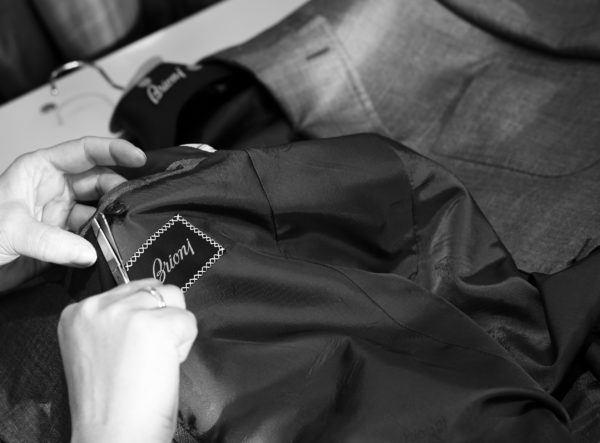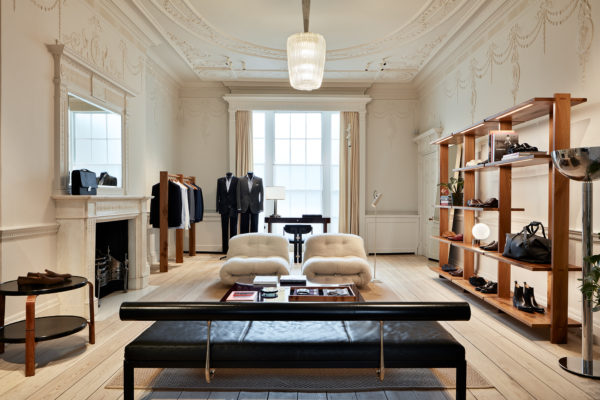Brioni: A Tailoring Tradition With Deep Roots
The prestige of Brioni’s customers is testament not only to the expertise of its master tailors, but also of a longstanding local knowledge. For the secrets of ‘Roman Style’ tailoring lie in the wooded hills of Abruzzo – and the sartorial skills passed from one generation to another.

Worn by James Bond on the silver screen and the likes of Barack Obama and Nelson Mandela in real life, Brioni’s bespoke suits regularly have a global audience that can be counted in millions. Yet the limelight of the world stage is a far cry from the quiet hilltop town in southern Italy where these suits are made, and a region whose tailoring tradition dates back centuries.
Brioni’s craftsmanship is firmly rooted in the Abruzzo, many of whose master tailors enjoyed success in the first half of the 20th century in the cities of Rome, where Nazareno Fonticoli and his business partner Gaetano Savini founded Brioni. “It’s safe to say that the ‘Roman Style’ that emerged in the 1930s and 1950s has its roots in the Abruzzo,” declares Angelo Petrucci, Brioni’s Chief Master Tailor and Head of Product Design. “And today, that local tradition is still hugely important to Brioni.” For its latest collection, Brioni’s designer Norbert Stumpfl highlighted that heritage by staging all the photography at its workshops in the hilltop town of Penne.
Learning the skills, from one generation to another
Though an artistic decision, the choice of location was also a tribute to the men and women whose meticulous handiwork is the key to Brioni’s bespoke tailoring. Every suit is the work of at least 220 people, each of them carrying out a single specific task. A Brioni jacket requires up to 12,000 stitches – only 17% of which will be visible externally – and is pressed no fewer than 80 times during the production process. The craft requires not only a passion for tailoring, but also a willingness to learn from a relatively early age.
“You need to start before the age of 20, otherwise your hands will not be sensitive enough, you need to have a feeling for the cloth,” says Angelo Petrucci, who joined Brioni as an apprentice in his mid-teens. It takes up to four years to learn the basic skills of stitching, sewing and cutting a variety of fabrics, and at least twice that to become a master tailor. To ensure those skills are passed from one generation to another, Brioni helped to create a tailoring school in Penne in 1985 that provides a three-year course for up to 18 students, some of whom will join Brioni when they finish.
The unique nature and quality of a Brioni suit is part of its lasting appeal – and why Brioni’s bespoke tailoring remains as relevant today as it did 70 years ago. Unlike the constraints of ready-to-wear, there is no limit to the style, materials or modifications, while its master tailors can provide valuable advice – and more. “There are many secrets to Brioni’s fine tailoring, and many ways in which one of our suits can alter someone’s appearance; for example, by making them appear taller, or slimmer,” reveals Angelo Petrucci, who has measured and fitted 40 heads of state. “We can make them not only look their best, but also more handsome. And that’s important if they are facing a TV audience, the media or an important meeting – it gives them extra confidence.”
A suit for every shape, and every desire
Equally important is the fact that every Brioni suit is truly a perfect fit. The use of natural fibers means that two hours after being worn for the first time, the cloth will have adapted to the wearer’s precise body shape. “A Brioni suit is like a second skin,” declares the House’s chief master tailor. “When you lift your arm or shoulder, only that part of the jacket moves, nothing else… And you could keep the suit in a wardrobe for 20 years, and it would still fit as perfectly as did on the first day.” A key reason for that enduring quality lies in the mechanics of the inside canvas, to which the inner lining and outer material are attached, and that has changed radically. Fifteen years ago, tailors chose from fewer than 10 canvas types. Today, that figure has risen to nearly 60, reflecting changes in technology and customer preference.
This ability to create a product of unsurpassed quality, created from the unique choices of each client, is what makes a Brioni suit an object of desire in the 21st century. Or, as one of those customers once wrote: “What’s wonderful about Brioni is that you become your own fashion designer, and you can make every dream come true.”


